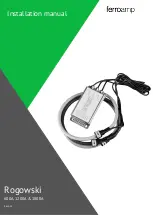
| 9
About your AIS class B transceiver |
NAIS-500 User Manual
Static and dynamic vessel data
There are two categories of information transmitted by an AIS trans-
ceiver: static and dynamic data.
The vessel’s dynamic data, which includes location, speed over
ground (SOG) and course over ground (COG), is calculated auto-
matically using the installed AIS antenna.
Static data is information about the vessel which must be pro-
grammed into the AIS transceiver. This includes:
•
Maritime Mobile Service Identity (MMSI)
•
Vessel name
•
Vessel call sign (if available)
•
Vessel type
•
Vessel dimensions
In most countries the operation of an AIS transceiver is included
under the vessel’s marine VHF license provisions. The vessel on to
which the AIS unit is to be installed must therefore possess a current
VHF radiotelephone license which lists the AIS system, vessel Call
Sign and MMSI number.
Warning:
An MMSI number is required in order for the AIS
transceiver to operate. Please contact the relevant authority in
your country for more information.
Important information for US customers
There are specific laws in the USA regarding the configuration of AIS
class B transceivers. If you are a US resident and intend to use your
AIS class B transceiver in US waters, you should make sure that your
retailer has configured your product prior to supplying it to you. If
your AIS transceiver has not been pre-configured, please contact
your dealer for details of how to have it configured.
Warning:
In the United States of America, the MMSI and
static data must only be entered by a competent installer. The
end user of the equipment is not authorized to enter their own
vessel data.
Summary of Contents for NAIS-500
Page 2: ......
Page 33: ...31 Specifications NAIS 500 User Manual NOTES...
Page 34: ...32 Specifications NAIS 500 User Manual NOTES...
Page 35: ......












































